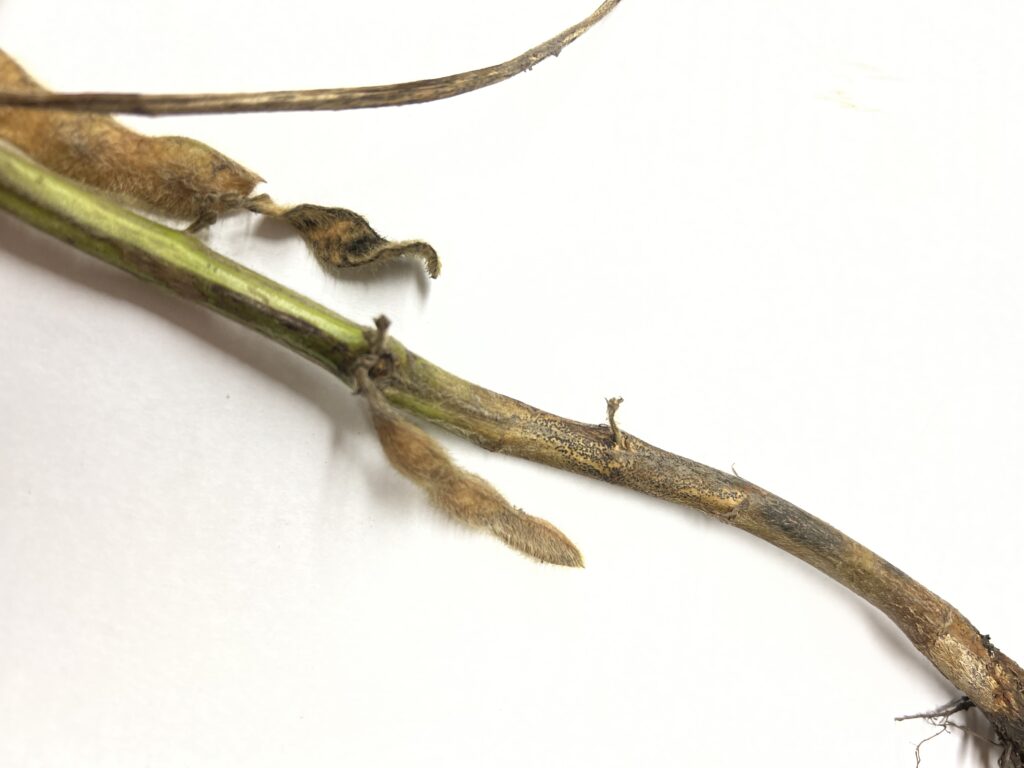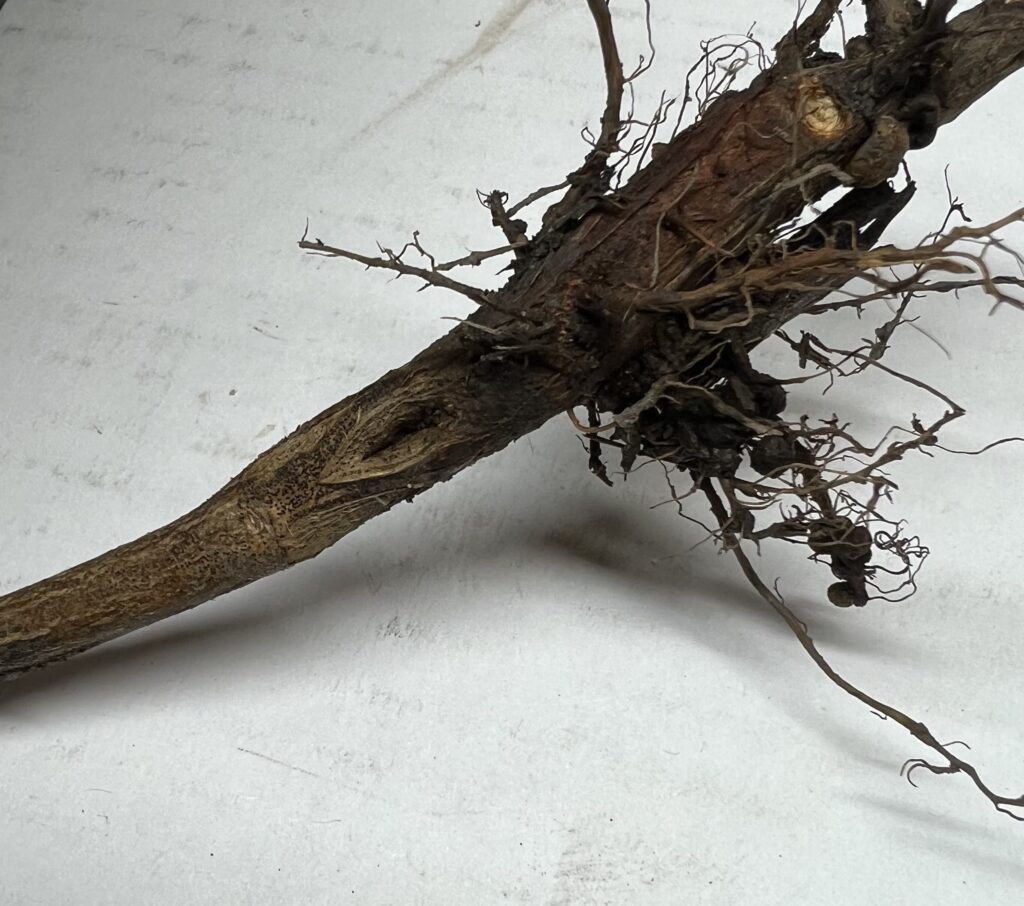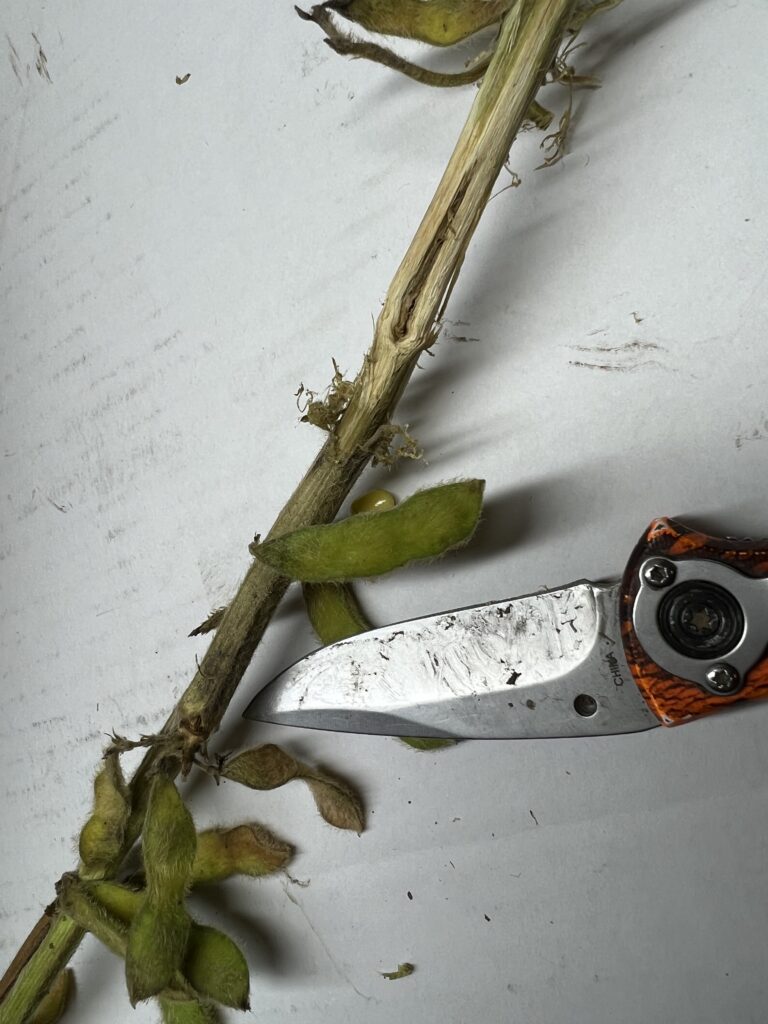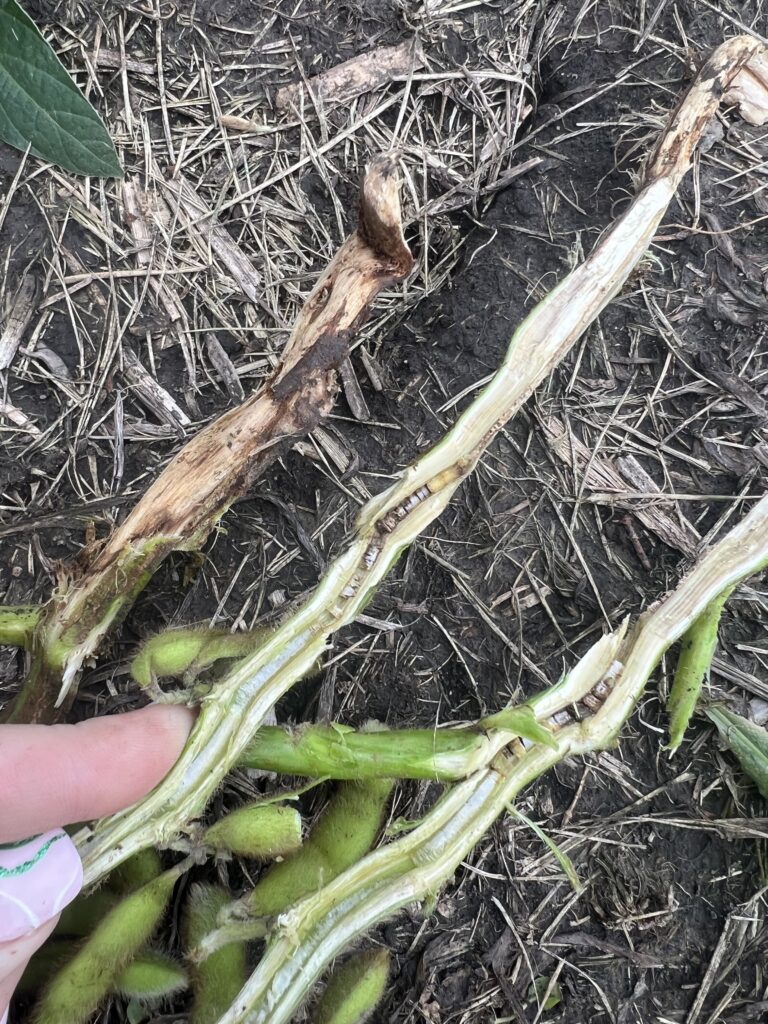In 2016, as an Illinois Soybean Association (ISA) Soy Envoy, I wrote a blog about finding stem canker in a field in Illinois. It is considered a “fairly common” disease, but not many people are talking about it. The causal pathogens that cause stem canker are (Diaporthe phaseolorumvar. caulivoraor) for Northern Stem Canker and (Diaporthe phaseolorum var. merdionalis) for Southern Stem Canker. This pathogen can lurk in the soil or residue for several years and it can be seedborne. Several weeds can harbor this disease. This pathogen infects susceptible soybean varieties when there is prolonged wet weather, especially early in the season during the vegetative growth stages.
As agronomist, you remember some nasty field calls and one was late in the season after the combine had rolled through the field. It becomes more difficult to diagnose stem canker late in the season, so it is best to diagnose when the plant is green. Once a plant is infected, this fungus releases a toxin later in the season that causes interveinal chlorosis, which causes leaf symptoms that can be confused with sudden death syndrome (SDS), brown stem rot (BSR), and red crown rot (RCR). As the plants die in patches, leaves can remain attached and confused with phytophthora root rot.
Once you start seeing symptoms during the reproductive growth stages, it is imperative that you evaluate the lower third of the stem to check for stem canker. Cankers, or dark sunken lesions, can be found at the base of the branch or leaf petioles or at the base of the stem near the soil line. At first, the cankers are reddish-brown and can consist of tiny black dots called perithecia (spore producing fungal structures). Cankers can extend over several nodes on one side of the stem, girdle the stem, and can kill the plant. If you are not sure, you can send a plant sample to the lab for a diagnosis.
Back in 2013, while working at the University of Illinois Plant Clinic, I recognized some susceptible soybean varieties were being planted. The problem is that soybean varieties vary in their susceptibility to stem canker and soybean seed companies may not have disease ratings for this disease. The plant’s susceptibility, early infection, and how cankering affects reproduction will determine yield loss. There have only been a few cases where I have witnessed high yield loss caused by this disease, but if environmental conditions are favorable, a susceptible variety can experience up to 50 percent yield loss if this disease is present in your field.
Fields with minimum or no-till as well as high fertility soil/organic matter are at higher risk for stem canker. Tillage and crop rotation to a non-host such as corn, wheat, and sorghum can help to reduce inoculum for the next soybean crop, but a 2-year rotation may be needed after a severe infection of stem canker. There are mixed reviews on effective fungicides. A fungicide is only effective if applied during early vegetative stages of susceptible soybean varieties. Our best defense against this disease is to plant resistant varieties to this disease.
As always, we would love to learn more, so I have asked some agronomists to please send in stem canker or other stem diseases to be evaluated by Dr. Jason Bond’s team at Southern Illinois University. His team is currently being funded by the Illinois Soybean Association checkoff to research soybean stem diseases in Illinois.

Perithecia or fruiting structures on the outside of a canker

Perithecia or fruiting structures on the outside of a canker near the soil line

Scrape the outer stem to find cankers on the stem. Knife is pointing to another canker.

A canker will be dark within the stem. Be careful not to confuse it with brown stem rot.
Sources:
Stem canker on soybean | UMN Extension
Soybean Stem Canker | NC State Extension Publications (ncsu.edu)


 and then
and then